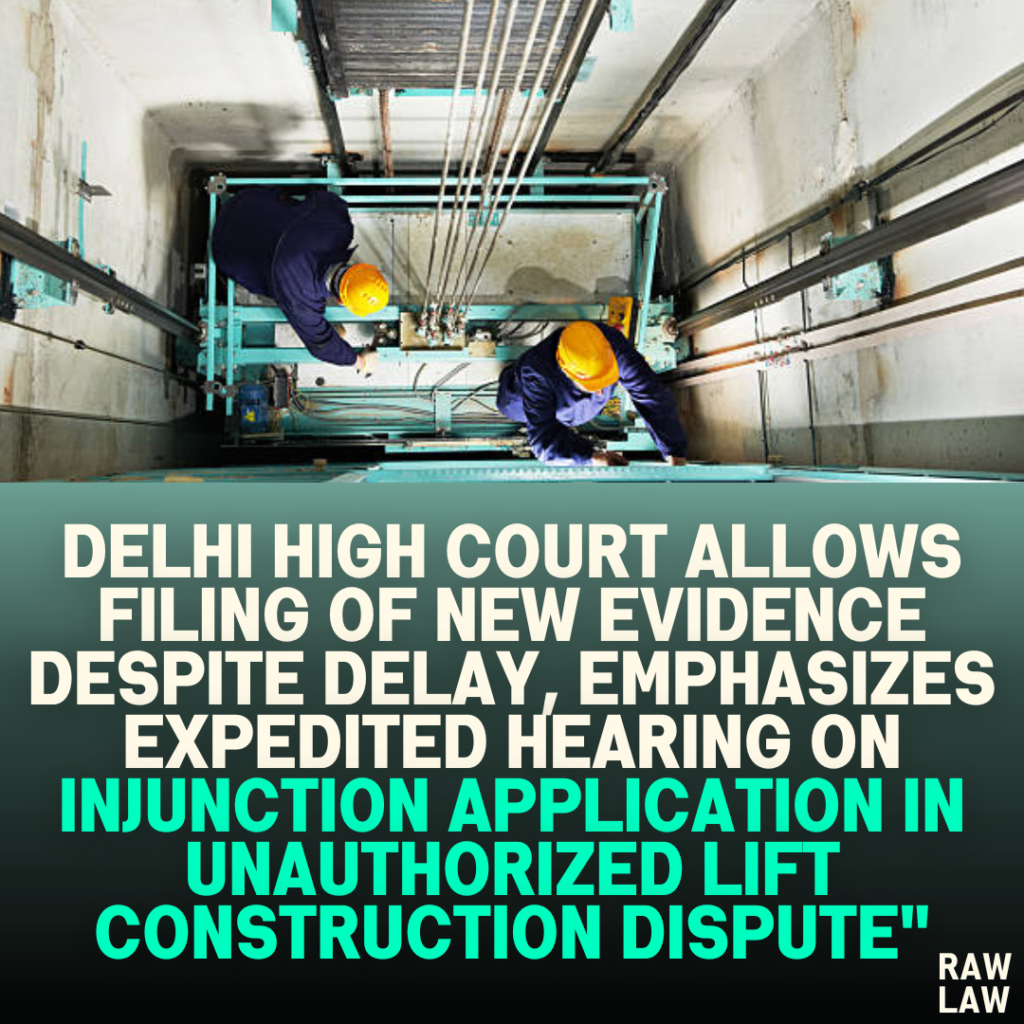Court’s Decision:
The Delhi High Court allowed the petitioner’s application to place additional documents on record, including reports from a structural engineer and architect, to support an ongoing injunction application concerning alleged unauthorized lift construction. The court noted the absence of a prior explanation for why these reports were not filed earlier but emphasized that this should not prevent their inclusion given the relevance to the case. The court also directed that the petitioner cooperate with the trial court to ensure an expedited hearing.
Facts:
The petitioner moved the High Court seeking permission to introduce three documents — a structural engineer’s report, an architect’s report, and a newspaper advertisement — to substantiate claims that a recently installed lift was constructed without proper authorization from the Municipal Corporation of Delhi (MCD). The petitioner argued that these documents are essential for evaluating the application for injunction filed under Order XXXIX Rule 1 and 2 of the Civil Procedure Code (CPC). The respondents contended that these reports were privately obtained and lacked probative value, especially given an existing contradictory report from the MCD.
Issues:
- Whether the petitioner could introduce additional documents that were not initially submitted.
- Whether these privately obtained reports would impact the ongoing injunction proceedings.
Petitioner’s Arguments:
The petitioner argued that the structural and architectural reports were critical in establishing unauthorized construction, as they allegedly demonstrate discrepancies between the sanctioned plans and the actual construction. The petitioner also assured the court of commitment to a swift resolution by agreeing not to file any further applications until the injunction application is disposed of.
Respondent’s Arguments:
The respondent opposed the inclusion of the new documents, arguing that the petitioner had ample opportunity to secure the reports prior to filing the lawsuit. The respondent further suggested that the petitioner’s delay was a tactic to prolong proceedings.
Analysis of the Law:
Under Order VII Rule 14 of the CPC, documents that were not initially filed with the plaint may be introduced later if they are deemed essential for deciding the issues at hand. The court has discretion to allow such documents when they are significant to the case, even in the absence of a prior explanation.
Precedent Analysis:
The court referred to the directives of the Supreme Court in a prior order involving the same parties, where it emphasized an expedited approach to resolving the injunction application. This precedent supports prioritizing substantial justice over procedural rigidity.
Court’s Reasoning:
The court reasoned that, while the petitioner’s delay in filing the documents was unexplained, the importance of the evidence outweighed the procedural lapse. Given the contentious nature of the lift construction and its compliance with MCD standards, the additional documents could significantly impact the trial court’s assessment. The court emphasized the need to avoid any delay in adjudicating the injunction.
Conclusion:
The court permitted the petitioner to place the additional reports on record, contingent upon cooperation with the trial court to facilitate an expedited hearing. The petitioner was instructed not to seek adjournments or file further applications that could delay the injunction proceedings.
Implications:
The decision underscores the High Court’s commitment to substantive justice by allowing relevant evidence even if procedural norms are not strictly followed, provided it serves the case’s merits. This approach reaffirms the importance of flexibility in civil proceedings, particularly where significant public or private interests, such as construction compliance, are at stake.




Pingback: Bombay High Court Declares Staff Nurses' Contractual Appointments as Regular, Emphasizing Compliance with Service Rules, 1967: "Contract Terms Cannot Override Formal Selection Process" - Raw Law